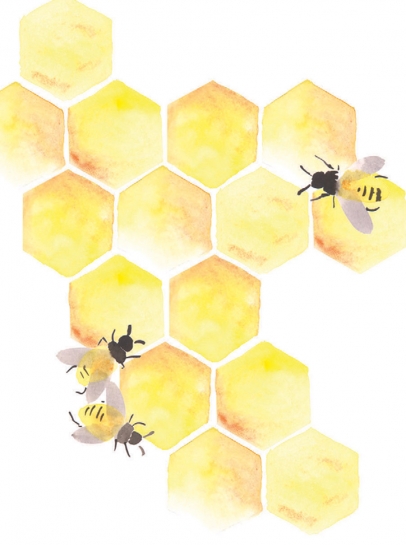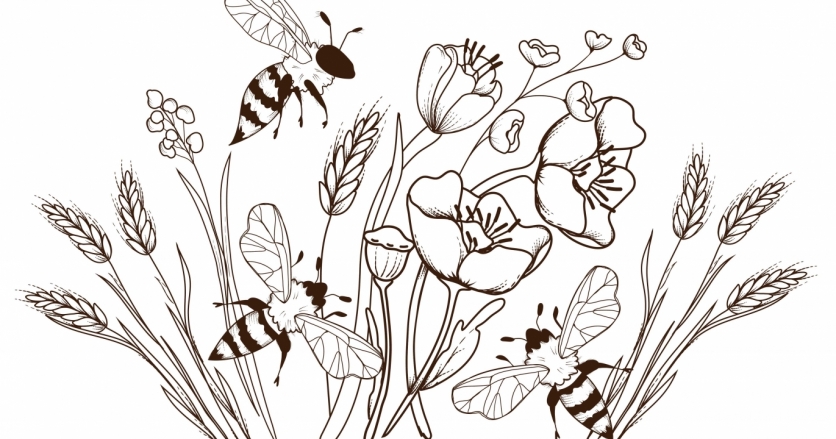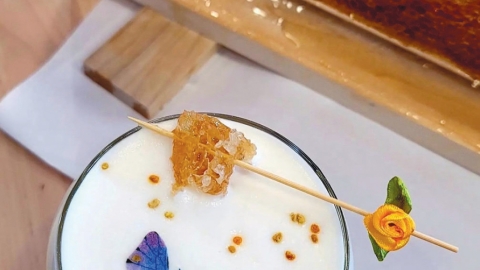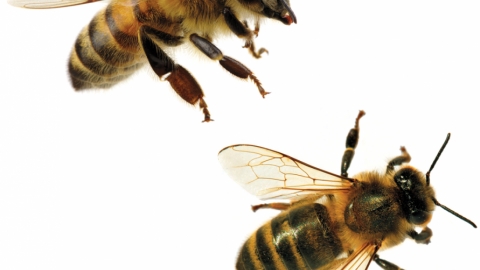A Buzz Worthy Cocktail
As a mixologist, I’ve always used honey in cocktails and in drinks. It’s in many classics ranging from the Bee’s Knees (with gin) to the Brown Derby (with whiskey). Honey is one of those ingredients that, once you start to dig beneath the surface, offers a lot more than meets the eye.
Several years ago I started exploring the many honey varietals out there and started pairing them with spirits … and wow, did that open up Pandora’s box. Since then, I’ve been on a honey journey that has taken me across the U.S. and back home to Arizona. I’ve visited numerous apiaries and taken part in honey harvests, an amazing experience.
THE BASICS
What is honey and how is it made?
Everyone knows that honey comes from bees, but how exactly does it go from being nectar produced by a flower to the honey we find in a jar? It’s a little complicated, but something that bees do extremely well as it’s built into their DNA. Bees are attracted to the nectar in flowers, hence why flower blossoms are so fragrant and colorful. Forager bees (the last stage of a bee’s life) suck the nectar from the flowers and swallow it. Enzymes from the bee’s stomach are added. The foraging bees bring the nectar back to the hive where they regurgitate it to another bee. That bee, in turn, also swallows the honey and more enzymes are added. That bee finally regurgitates it into a cell of a wax honeycomb. Once the cells are full, the bees flap their wings to wick off excess moisture until it thickens, reaching the consistency of honey. From there, the bees cap the honey where it stays until either a) they eat it for nutrition or b) it’s harvested by a beekeeper. And, voila, that’s how we get honey. For artisan honey, no preservatives or other processes are used, other than simply filtering it.
THE VARIETALS
There are hundreds of honey varietals around the world. They are named after whatever the bees are eating: clover, orange blossom, alfalfa, mesquite, etc. Any flower that produces a nectar and can be pollinated can usually produce a honey from bees. (There are some exceptions as some blossoms attract bees but don’t produce a lot of nectar, hence not a lot of honey; almonds are one example.) There is a wide variety in color, aromatics and flavors amongst honey varietals.
Color
Colors in honey can range from water white to dark amber (the color of molasses). Typically, the lighter a honey is, the more delicate the flavors. The darker the honey, the more robust and savory. As honey ages, it does tend to darken, but age shouldn’t affect the flavor.
Aromatics
Honey is incredibly complex and nuanced. Its flavors and aromatics range from confectionary-like (sweet cream, marshmallow, donut) to herbaceous (eucalyptus, sage, mint) to nutty (almond, nutmeg, hazelnut) to savory and funky (forest floor, mushroom, barnyard).
Arizona Honeys
Arizona is home to many fragrant, delicious honeys such as mesquite, cat’s-claw, orange blossom and the rare saguaro blossom. I would highly encourage you to take a trip to your local farmers market to discover them. Because they change with the season, every jar you buy throughout the year might be a little different.
Local Apiaries
Want to find a local apiary to visit? No problem. Go to honeylocator.com and type in your zip code. A list of local apiaries will show up with a set mile radius.
PAIRING HONEY AND SPIRITS
Mesquite Honey
Flavor: Relatively mild. Slightly nutty.
What to use it with: rum cocktails.
Cat's-Claw Honey
Flavor: Mild. Buttery. Lightly floral.
What to use it with: vodka or gin.
Orange Blossom Honey
Flavor: Floral, orange peel
What to use it with: gin.
Wildflower Honey
Flavor: “Wildflower” is the name used to designate a honey when the beekeeper can’t identify the blossom or it’s a combination of blossoms. That’s why the widest variety of flavor is among wildflower honeys. Slight bitter undertone. Sweet.
What to use it with: tequila, vodka, amaro.
Alfalfa Honey
Flavor: Slight grassy notes. Herbaceous.
What to use it with: tequila! (It enhances and extends the flavor of agave.)








